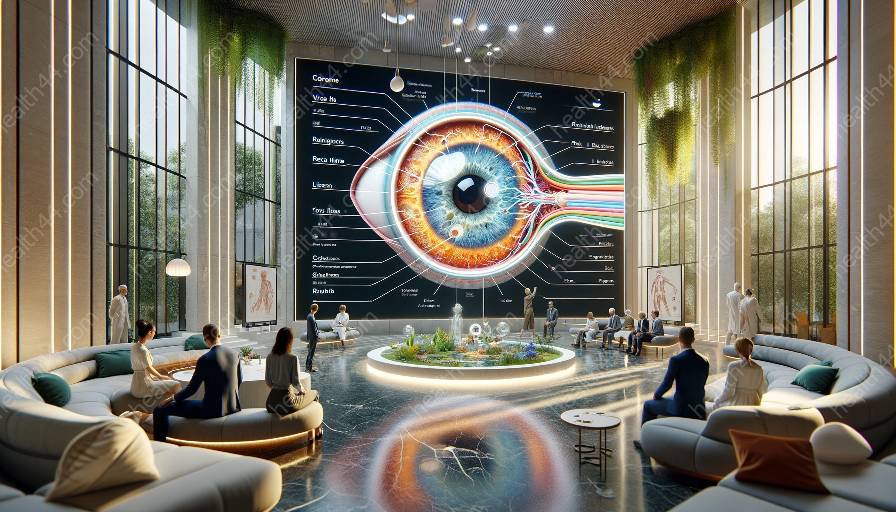The human eye is a marvel of biological engineering, comprising several complex structures that work in unison to provide clear vision. In this comprehensive guide, we'll delve into the various components of eye anatomy and their functions, while considering their implication in vision rehabilitation and care.
An Overview of Eye Anatomy
At the core of understanding the visual system is comprehending the various parts of the eye and how they function together to enable vision. The key structures include the cornea, iris, pupil, lens, retina, optic nerve, and more.
Cornea
The cornea is the transparent, dome-shaped front part of the eye that plays a critical role in focusing light that enters the eye. It refracts light and helps to focus it on the retina, contributing to clear vision.
Iris and Pupil
The iris is the colored part of the eye that controls the size of the pupil. The pupil, in turn, regulates the amount of light that enters the eye and reaches the retina. These structures work together to manage the amount of light that enters the eye in various lighting conditions.
Lens
The lens is a transparent, flexible structure located behind the iris and the pupil. It further focuses light onto the retina and is particularly crucial for near and far vision adjustments, a process known as accommodation.
Retina
The retina is the layer of tissue located at the back of the eye. It contains photoreceptor cells, namely rods and cones, which convert light into neural signals and transmit them to the brain via the optic nerve. This process is fundamental to visual perception.
Optic Nerve
The optic nerve is responsible for transmitting visual information from the retina to the brain. It carries electrical impulses generated by the light-sensitive cells of the retina to the visual cortex in the brain, where the information is processed and interpreted, resulting in vision.
Implications for Vision Rehabilitation and Care
Understanding the intricacies of eye anatomy is vital when considering vision rehabilitation and care. Individuals undergoing vision rehabilitation, whether due to injury, disease, or aging, can benefit from comprehensive knowledge of eye anatomy to understand the specific structures affected and the potential for restoration. Furthermore, individuals seeking vision care, such as optometric assessments and corrective interventions, benefit from a strong grasp of eye anatomy to comprehend the rationale and function of various treatments.
Vision Rehabilitation
For individuals undergoing vision rehabilitation, the knowledge of the specific structures of the eye and their interconnected functions is crucial to understanding the impact of their particular condition. Whether it involves injury to the cornea, degeneration of the retina, or damage to the optic nerve, understanding the affected structures is paramount to formulating an effective rehabilitation plan.
Vision Care
Similarly, individuals seeking vision care, including routine eye examinations, eyeglasses or contact lens prescriptions, and surgical interventions, benefit from a deep understanding of eye anatomy. This knowledge empowers them to comprehend the rationale behind their prescribed treatments and the mechanisms by which these interventions aim to restore or enhance vision.
Conclusion
Eye anatomy is a complex and fascinating subject with profound implications for both vision rehabilitation and care. By unraveling the intricacies of the cornea, iris, lens, retina, optic nerve, and the numerous other structures within the eye, we gain a deeper appreciation for the remarkable sensory system that enables us to perceive the world around us. Furthermore, this understanding equips us to better navigate the world of vision rehabilitation and care, ensuring that individuals with visual challenges receive the support and treatment they need to optimize their visual abilities.





















